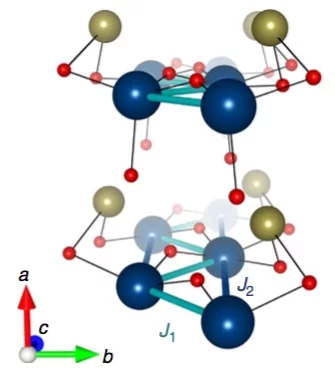Motifs of periodic modulations are encountered in a variety of natural systems, where at least two rival states are present. In strongly correlated electron systems, such behaviour has typically been associated with competition between short- and long-range interactions, for example, between exchange and dipole-dipole interactions in the case of ferromagnetic thin films. Here we show that spin-stripe textures may develop also in antiferromagnets, where long-range dipole–dipole magnetic interactions are absent. A comprehensive analysis of magnetic susceptibility, high-field magnetization, specific heat and neutron diffraction measurements unveils β-TeVO4 as a nearly perfect realization of a frustrated (zigzag) ferromagnetic spin-1/2 chain. Notably, a narrow spin-stripe phase develops at elevated magnetic fields due to weak frustrated short-range interchain exchange interactions, possibly assisted by the symmetry-allowed electric polarization. This concept provides an alternative route for the stripe formation in strongly correlated electron systems and may help under- standing of other widespread, yet still elusive, stripe-related phenomena.
Reference: M. Pregelj et al, Nature Communications 6, 7255 (2015)
Read full article: here


